Honor Award
The Regeneration / Yongsan Park
Seoul, South Korea
UnitedLAB, Seoul, South Korea and Isaac Brown Ecology Studio, Los Angeles
Client: City of Seoul
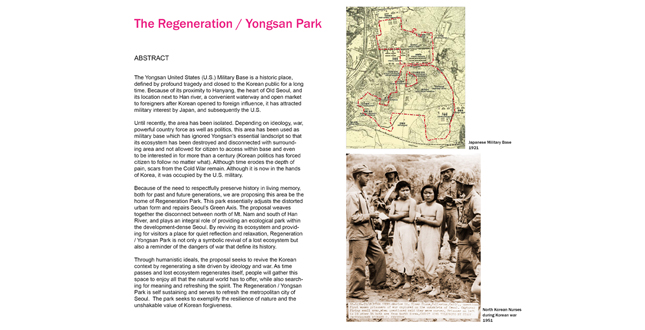
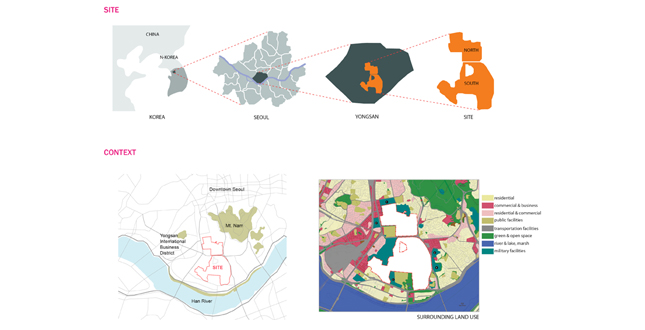


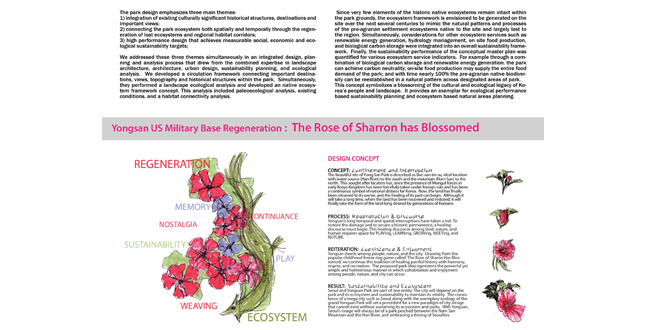
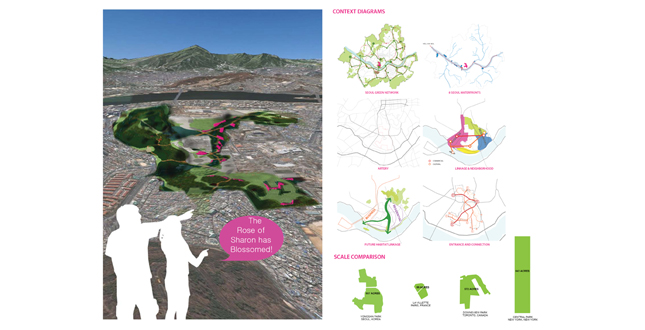
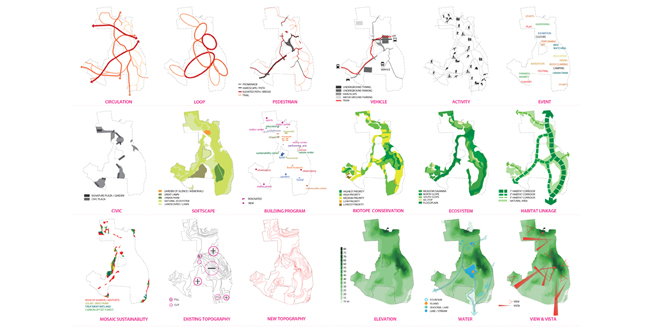
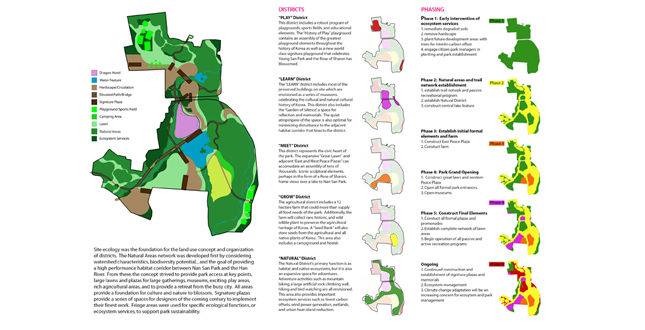
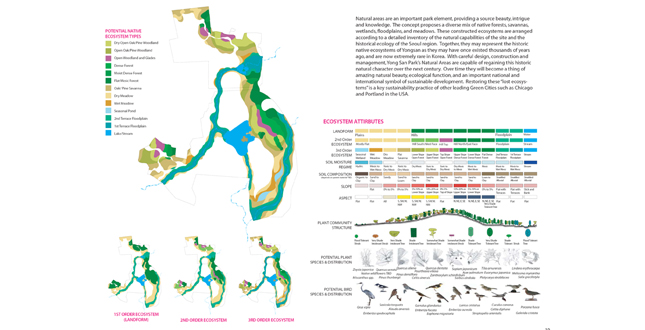 Close Me!
Close Me!Natural Areas: Ecosystem Map and Natural Areas Concept: "Lost Ecosystems"
Download Hi-Res ImageImage: City of Seoul
Image 9 of 14
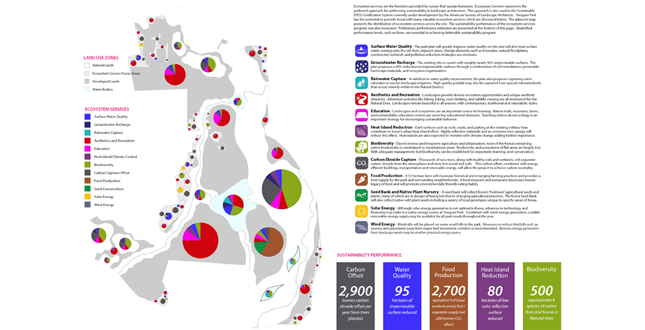 Close Me!
Close Me!Ecosystem Services Distribution and Sustainability Concept: "Ecosystem Services"
Download Hi-Res ImageImage: City of Seoul
Image 10 of 14
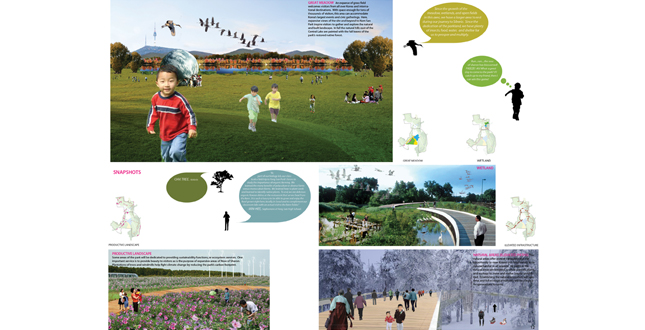
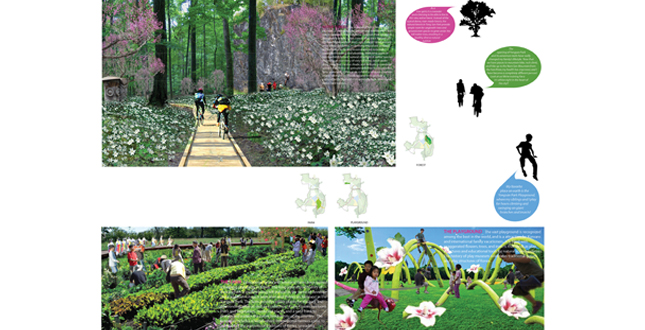
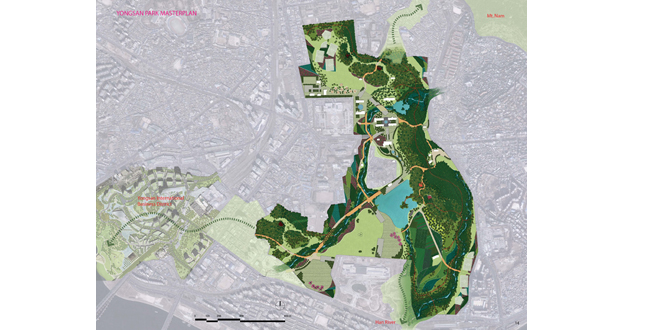

Project Statement
Yongsan Park is to be a national symbol of Korea and an exemplar of sustainability for the 21st century.
This concept symbolizes a blossoming of the cultural and ecological legacy of Korea’s people and landscape. It provides and exemplar for ecological performance based sustainability planning and ecosystem based natural areas planning.
Project Narrative
—2011 Professional Awards Jury
Yongsan US Military Base Regeneration : 'The Rose of Sharron has Blossomed'
Weaving the patriotic message of the iconic children's game, The Rose of Sharron has Blossomed, with deep ecological design concepts and historic preservation to generate a vibrant, ecologically rich, and culturally sustainable park ecosystem.
"The Rose of Sharron has Blossomed" is a children’s game known to every Korean. As Korea's national flower, the game symbolizes the liberation of the culture from Japanese colonization ending in the early 20th century. Development of a central park for Seoul at Yongsan in many ways represents one of the final significant events in the blossoming of Korean culture following this legacy of colonization. Yongsan is located in the geographic center of Seoul between the Han River and Mt. Nam, and is currently home to a 600 plus acre United States military base. Yongsan Park is to be a national symbol of Korea and an exemplar of sustainability for the 21st century.
The park design emphasizes three main themes:
- Integration of existing culturally significant historical structures, destinations and important views;
- Connecting the park ecosystem both spatially and temporally through the regeneration of lost ecosystems and regional habitat corridors;
- High performance design that achieves measurable social, economic and ecological sustainability targets.
The team addressed these three themes simultaneously in an integrated design, planning and analysis process that drew from the combined expertise of the team in landscape architecture, architecture, urban design, sustainability planning, and ecological analysis. The team developed a circulation framework connecting important destinations, views, topography and historical structures within the park. Simultaneously, they performed a landscape ecological analysis and developed an native ecosystem framework concept. This analysis included paleoecological analysis, existing conditions, and a habitat connectivity analysis. Since very few elements of the historic native ecosystems remain intact within the park grounds, the ecosystem framework is envisioned to be generated on the site over the next several centuries to mimic the natural patterns and processes of the pre-agrarian settlement ecosystems native to the site and largely lost to the region. Simultaneously, considerations for other ecosystem services such as renewable energy generation, hydrology management, on site food production, and biological carbon storage were integrated into an overall sustainability framework. Finally, the sustainability performance of the conceptual master plan was quantified for various ecosystem service indicators. For example through a combination of biological carbon storage and renewable energy generation, the park can achieve carbon neutrality; on-site food production may supply the entire food demand of the park; and with time nearly 100 percent the pre-agrarian native biodiversity can be reestablished in a natural pattern across designated areas of park.
This concept symbolizes a blossoming of the cultural and ecological legacy of Korea’s people and landscape. It provides and exemplar for ecological performance based sustainability planning and ecosystem based natural areas planning.
Project Resources
Lead Designers:
Isaac Brown, ASLA; Sang Dae Lee
Graphics and Content:
H. Helen Brown; Wilson Rodas
3D Rendering:
Wilson Rodas






